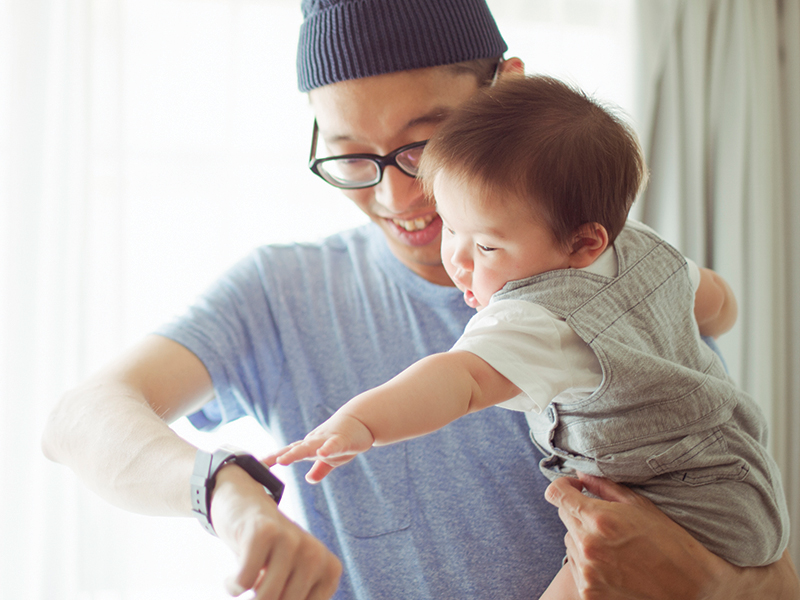
Among countries in the Organisation for Economic Cooperation and Development, South Korea has one of the lowest birth rates and one of the highest gender pay and employment gaps.
In addition, according to a 2019 OECD report, men in the country are reluctant to take parental leave because of perceived constraints put on them by workplace culture and the long-term career and economic costs of taking the leave.
To address these factors, South Korea has gradually rolled out changes to its publicly funded parental leave and benefits. Historically, parents covered under the country’s employment insurance fund could receive 12 months of paid parental leave each, with the entitlement available until a child’s eight birthday.
Read: How to bridge the parental leave divide
“Similar to Canada, there is separate maternity and parental leave, so mothers effectively have two entitlements: they have maternity leave to use directly around the birth and parental leave to use later on,” says Chris Clarke, a junior economist in the OECD’s directorate for employment, labour and social affairs. “And it’s actually the same for fathers in South Korea. They initially benefit from paternity leave and they have an additional entitlement to parental leave, which is the one year.”
In October 2014, the government introduced “daddy months.” Initially, second parents, predominantly fathers, covered by the EI fund could take one month off, during which they received 100 per cent of their salary, up to a maximum of KRW1,500,000. In 2016, the benefit was increased to three months. And in 2017, 2018 and 2019, the government raised the payment ceiling on the benefit. Today, the amount is KRW2,500,000, the equivalent to about 61 per cent of average earnings for a full-time worker.
Further amendments were introduced in July 2019, including a flat-rate cash benefit of KRW500,000 for 90 days after the birth of a child to couples who weren’t covered by the EI fund. And specifically for working fathers, legislation was introduced on Oct. 1, 2019, which allows them to take 10 days of paid paternity leave within 90 days of a child’s birth.
Employees with children under age nine can also work fewer hours for up to two years. The new flexible working option entitles employees to reduce their workday by one hour without loss of pay.
Read: ‘Room for improvement’ in OECD, EU family-friendly policies, says Unicef
“The government was motivated first and foremost because of their falling birth rates,” says Nora Spinks, chief executive officer at the Ottawa-based Vanier Institute of the Family. “They want to have more babies and made some changes to their employment insurance act. They put a new priority for gender equality and the whole work-family compatibility, which I think is a really interesting concept from a South Korean cultural perspective.”
AROUND THE WORLD IN PATERNITY LEAVE
According to the OECD’s 2018 family database, the following countries have the highest number of weeks of paid paternity leave and of parental leave that can be taken only by the father:
52.6 South Korea
52 Japan
28 France
22.3 Portugal
19.3 Belgium
19.3 Luxembourg
14.3 Sweden
13 Iceland
10 Norway
9 Finland
8.7 Germany
8.7 Austria
8.1 OECD average
Alongside these changes, the number of fathers taking parental leave increased from 7,616 in 2016 to 17,662 in 2018, according to the South Korean ministry of employment and labour. And in 2019, it expected this trend to surpass 20,000 people by the end of the year.
“If we look at the annual data, it’s a steadily in-creasing number of fathers taking parental leave — they’ve been growing steadily over time,” says Clarke.
Back at home
The availability of income support programs makes a difference in paternity involvement, says Spinks, noting the evidence is clear in South Korea and also in Canada, where a new use-it-or-lose-it, five-week incentive for second parents to take parental leave was introduced in March 2019.
Read: Budget offers details on new five-week leave for second parent
“Once you start developing these programs based on evidence, as opposed to ideology . . . then you’re going to start to see countries all across the globe beginning to . . . pay attention to this,” she says. “There are significant gains from a society and economy perspective, but also significant gains for employers.”
Diana Bartolic, managing partner of talent at Deloitte Canada, says it’s important to change the attitudes that prevent men from taking parental leave, noting this really starts in the workplace. “It’s about leaders knowing their employees . . . and having those conversations and encouraging [men].”
The company offers all employees 17 weeks of parental leave benefits, which top-up EI to 100 per cent of salary for four weeks. It also has an option for adoptive or foster parents, providing 20 days off at 100 per cent of salary, because EI benefits aren’t currently available for foster parents.
Read: U of T focusing on employee work-life balance with family-friendly benefits
“So we really tried to be more inclusive around the options,” says Bartolic.
It takes a few years to get there, but the additional benefits are ultimately game-changing for employees, she adds. “The conversation at home becomes very different when you have paid benefits on both sides for both partners, and they’re actually able to think equally about where they are in their career journey.”
Alethea Spiridon is the former managing editor of Benefits Canada.
